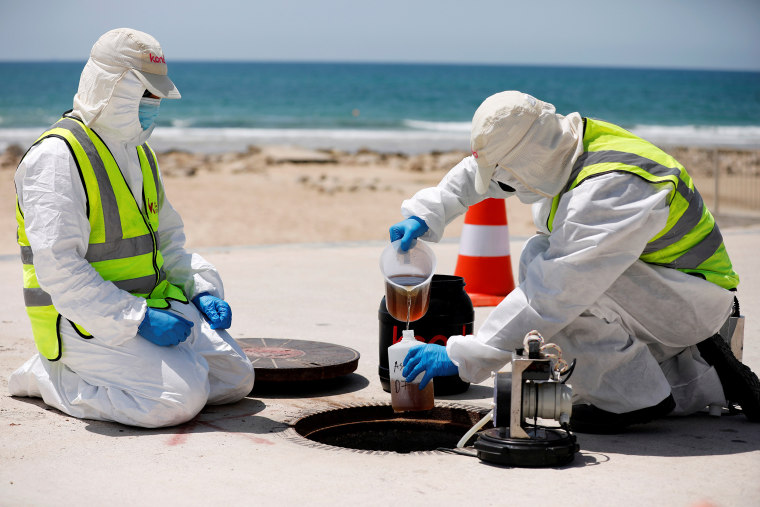The University of Arizona made a bold claim this week: It stopped a coronavirus outbreak before it started.
Universities around the U.S. have struggled with outbreaks as they attempt to start the fall semester. But at the Likins Hall dorm, just across the street from the University of Arizona's recreation center, two students were found to have contracted the coronavirus — and they were asymptomatic.
The university said it pulled this off by combining more common forms of coronavirus mitigation, swab testing and contact tracing, with a more exotic one: analyzing sewage.
The university had implemented a campus-wide initiative to conduct what’s known as wastewater-based epidemiology. This effort, which involves analyzing sewage samples for traces of the coronavirus, gave the university a way to quickly and repeatedly look for traces of the virus in discrete groups of people — in this case, dorms — as part of an early warning system to catch cases of COVID-19.
Full coverage of the coronavirus outbreak
“From one test, we get the prevalence of the virus within the whole community,” said Ian Pepper, an environmental microbiologist who is leading the wastewater testing effort on campus.
The idea is catching on. Researchers in the United Kingdom launched a program in July to conduct cross-country wastewater surveillance. In Israel, scientists who collected sewage samples nationwide in March and April heralded the effort as an effective, noninvasive way of tracking outbreaks across geographic regions.
At the University of Arizona, Pepper said this type of testing is especially useful for finding and isolating infected individuals before they have a chance to spread the virus widely. The two cases that have been identified at the university were both asymptomatic, and Pepper said wastewater testing could be sensitive enough to detect the coronavirus up to a week before a person develops symptoms.
“So, you have seven precious days in which you can undergo intervention,” he said.
Pepper’s team is conducting regular tests of sewage from 20 buildings across campus, including dorms and the university’s student union center.
If a sample comes back positive for the coronavirus, the school’s protocol is to then test everyone who lives or works in the building using traditional nasal swabs or antigen tests that are designed to detect viral proteins. Infected individuals are then quarantined, according to Dr. Robert C. Robbins, president of the University of Arizona.
Wastewater testing is designed to catch fragments of the virus that are shed from the body in fecal matter. Pepper’s team has been collecting sewage samples from buildings twice a week around 8:30 a.m. — a time that Pepper said is, “after people got up and typically go to the bathroom.”
If there are positive results, the sampling can be done more frequently, he said, but the researchers also found that bits of the virus tend to linger in wastewater rather than being dispersed immediately.
Robbins said wastewater-based epidemiology is a crucial part of the school’s “test, trace and treat” protocol and is a valuable tool that allows for more precise testing.
“What we’re trying to find are those asymptomatic individuals who can be unknowing vectors infecting people,” Robbins said.
Download the NBC News app for full coverage of the coronavirus outbreak
But this type of sampling can also be done at the neighborhood and community level, according to Pepper. In addition to studying sewage on campus, scientists at the University of Arizona have been analyzing samples from wastewater treatment plants across the country, including New York and Los Angeles.
In addition to finding potential hot spots, wastewater testing can help public health officials measure the severity of viral transmission in communities. In Arizona’s Pima County, for example, wastewater samples taken six weeks ago, when the state was dealing with a significant spike in cases, were found to have “sky-high” concentrations of the virus, according to Pepper. In the last two weeks, those concentrations, along with the number of new cases, “have dropped dramatically,” he said.
Pepper said he and his colleagues are hoping to publish the results of their research in a peer-reviewed journal, but for now, they are just pleased that this testing method is proving to be effective.
“They’re all jazzed. Everyone is really hyped up,” he said. “It’s a great case study.”


